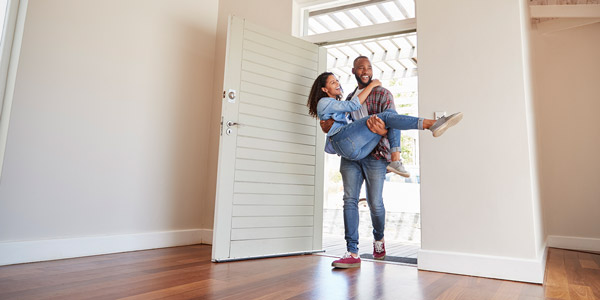Homebuyers
6 Tips for Homebuyers Trying to Snag a Lower Mortgage Rate
July 29, 2024
While home prices and mortgage rates may be starting to (slowly) come down in some markets, there's no doubt that today's interest rates are far steeper than they were just a few years ago.
A rate that is just a few percentage points higher generally can cost you hundreds of extra dollars each month in your mortgage payment. That can add up to thousands each year, depending on the size of your loan.
That shouldn't scare homebuyers out of the market, though. There are a variety of ways you can secure a lower mortgage rate. Here are six ways you can lower your mortgage rate.
1. Consider an ARM to score a lower mortgage rate
An Adjustable-Rate mortgage, also known as an ARM, operates exactly as it sounds.
Rather than paying the same interest rate over the entire length of a loan, homeowners typically lock in a lower introductory mortgage rate for a set period (typically five, seven, or 10 years.)
Then the rate periodically adjusts, typically every six to twelve months, based on current market rates. Many borrowers who use an ARM eventually refinance into a new loan.
"ARMs are beginning to pop up again, as they did many years ago for buyers to get into a home," said Pamela Young, real estate broker with eXp Realty. "I expect that if rates remain the same, ARMs will once again become popular."
2. Look for a temporary mortgage rate buydown
Some sellers and homebuilders, and even lenders, offer temporary rate buydowns. This is when they pay to lower your mortgage rate, generally for one to three years.
In the first year of a "2-1" buydown, the rate would be two percentage points lower than the contract rate. That means if you took out a loan with a 7% rate, you would have a 5% rate in the first year of the loan. That rate would move up to 6% in year two. It would then adjust to 7% for the remainder of a 30-year, Fixed-Rate loan—unless you refinance the loan.
Sellers and builders often do this to incentivize buyers to purchase their homes. Some builders are even buying down rates permanently.
The risk with a temporary buydown is you could be stuck with today's rates if rates don't come down as anticipated.
3. VA and FHA loans offer lower mortgage rates

Qualifying for a U.S. Department of Veteran Affairs (VA) loan or a Federal Housing Administration (FHA) loan can make a big difference in your bottom line.
Veterans, active servicemembers, and their families may want to consider a VA loan when purchasing a home. These loans often offer lower interest rates—and don't require a down payment.
However, VA loans may come with funding and other fees that may need to be paid upfront.
FHA loans have lower interest rates than Conventional loans—often by a half-percentage point or more, according to Mortgage News Daily. This is because they're government-backed, making them a lower-risk option for lenders. That equates to lower rates.
These loans also offer low down payment requirements, typically 3.5% of the sale price, and the option to roll closing costs into the loan.
4. Purchase mortgage points to lower your mortgage rate
Mortgage points can be purchased at a home's closing to lower an interest rate. Points generally lower rates in 0.25% increments. So, you would need to buy two points to bring a 7% rate down to 6.5%.
One point typically costs one percent of the loan, so a point on a $350,000 loan would cost $3,500. Two would cost $7,000.
Though points can come with steep upfront costs, they can make a big difference in the long run.
However, it's important to note that points only make sense if you plan to stay in the home for the long term. Their financial benefits may not be worth it if you only plan to spend a few years in a home.
5. Make a larger down payment

The typical down payment for first-time buyers is just 8%, according to the National Association of Realtors. However, making a higher down payment can lead to substantial savings both in the near term and down the road.
Higher down payments may come with lower interest rates, as lenders see you as a less risky investment.
They can also make your offer more competitive to sellers. They may view your offer as one that's less likely to hit any snags in financing.
"Many sellers in this market seem to prefer buyers with substantial down payments of 10 to 20%," said Young.
Larger down payments also slash the amount of interest you'll pay over the term of your mortgage. This is because you'll be borrowing less from your lender, thus reducing the amount of debt you'll need to pay interest on.
6. Shorten loan terms
Shorter loan terms follow a similar strategy to making a larger down payment. A mortgage with a 15-year term, rather than a 30-year one, will be paid back faster, thus minimizing risk to a bank or lender.
Because of this, you'll often get lower rates.
Aside from that, you'll still pay less in interest. That's because you'll be making fewer payments, which go towards both the principal and the interest, than homeowners with longer loan terms.
The downside is your monthly mortgage payments will also be higher as you're paying off the loan on an accelerated timeline.






 Smart Moves Start Here.
Smart Moves Start Here.